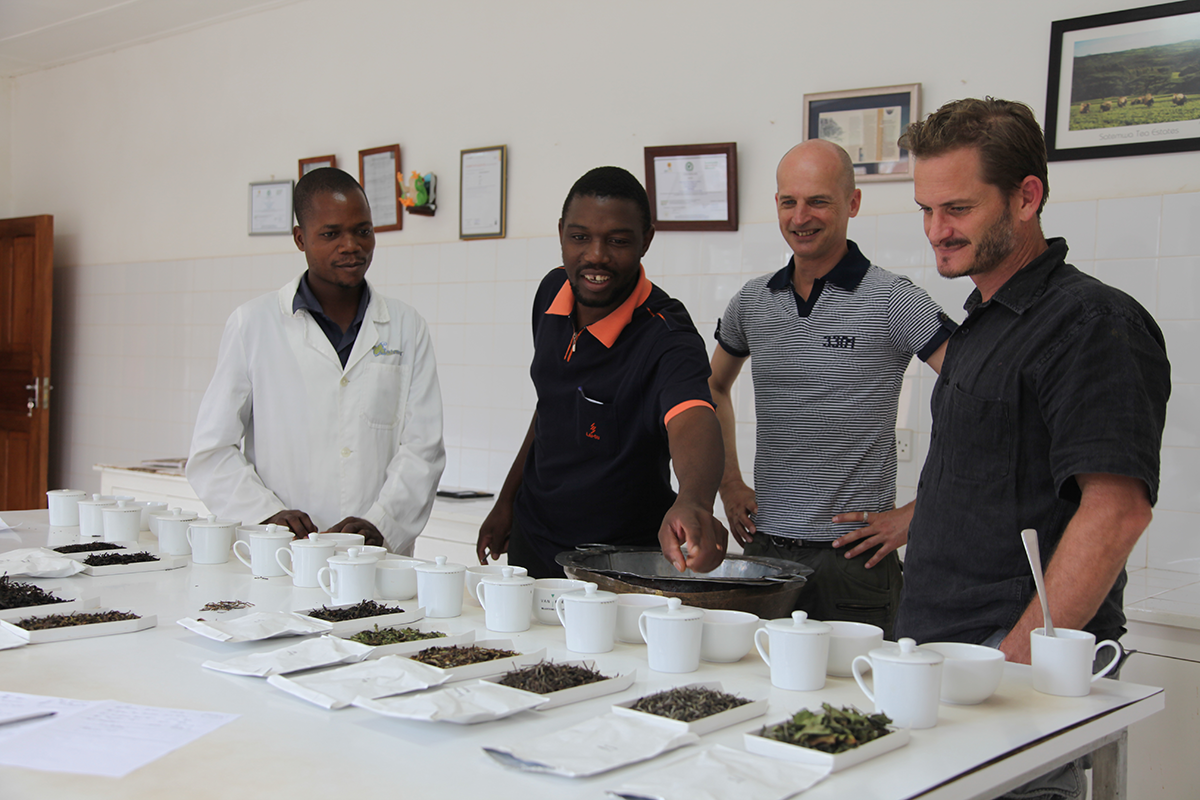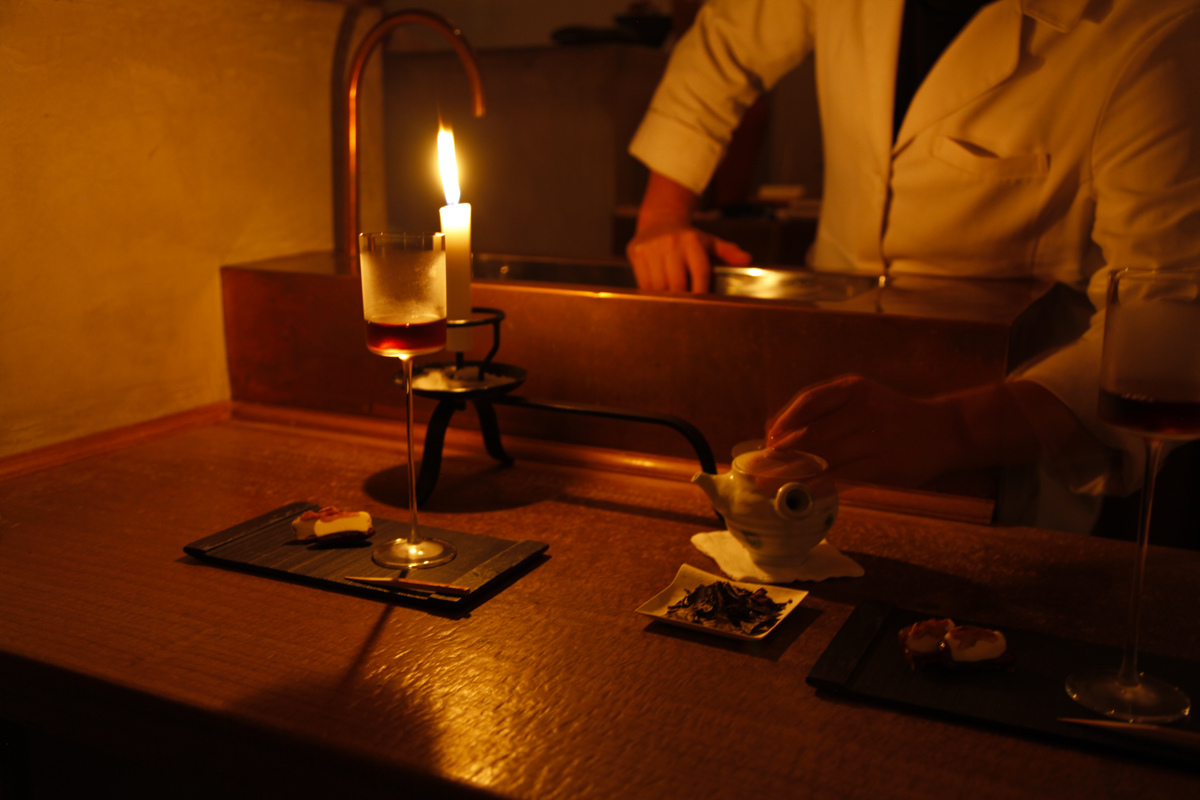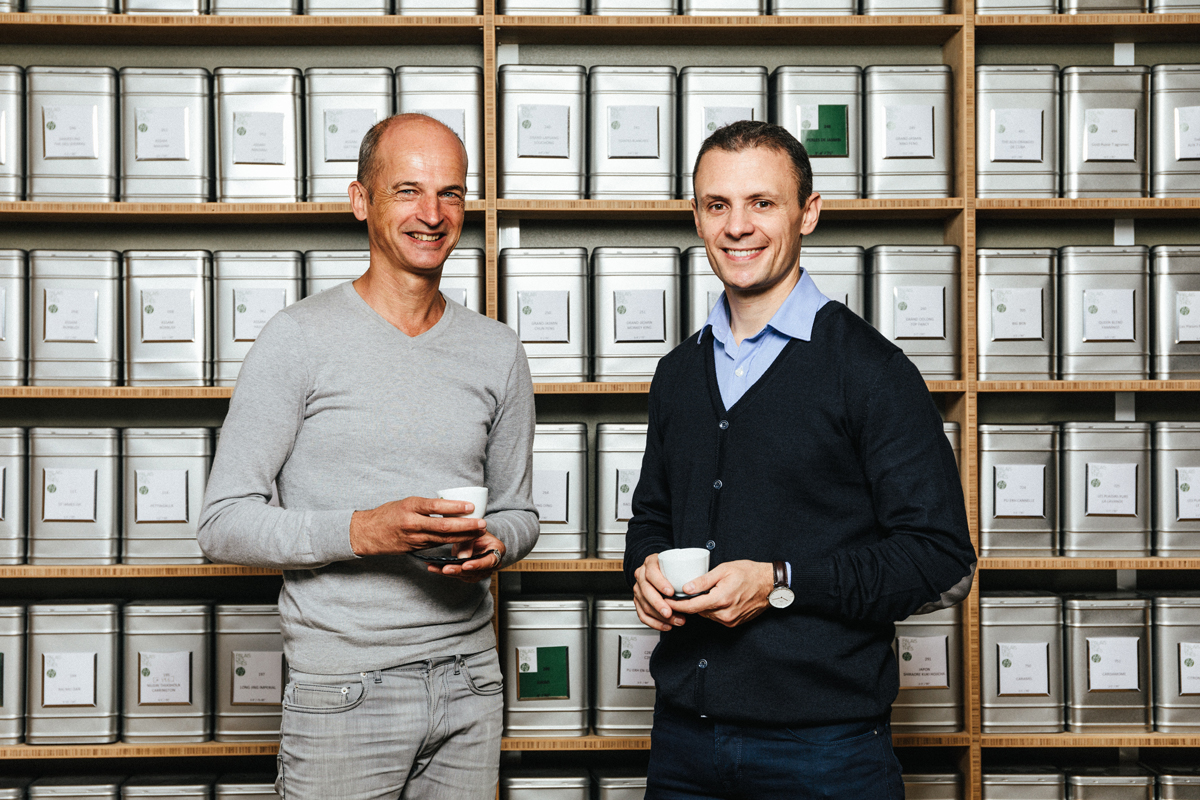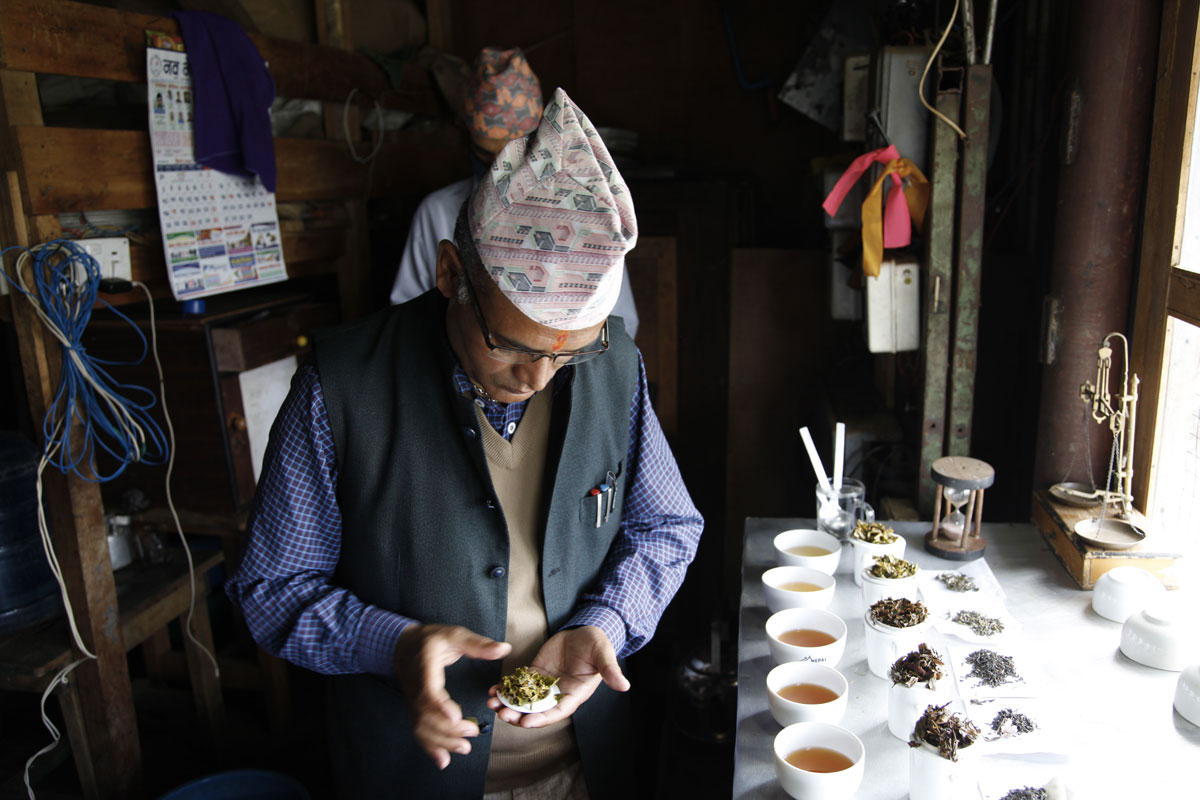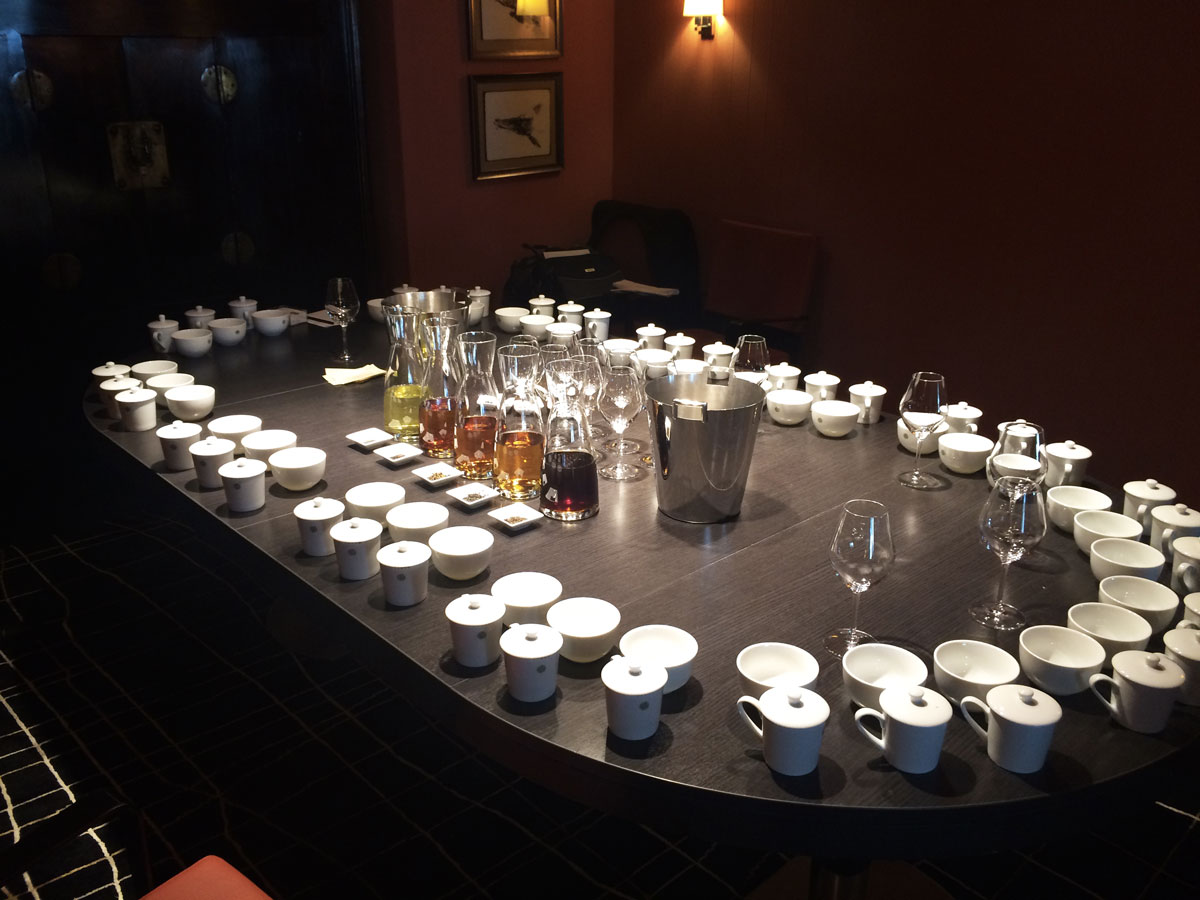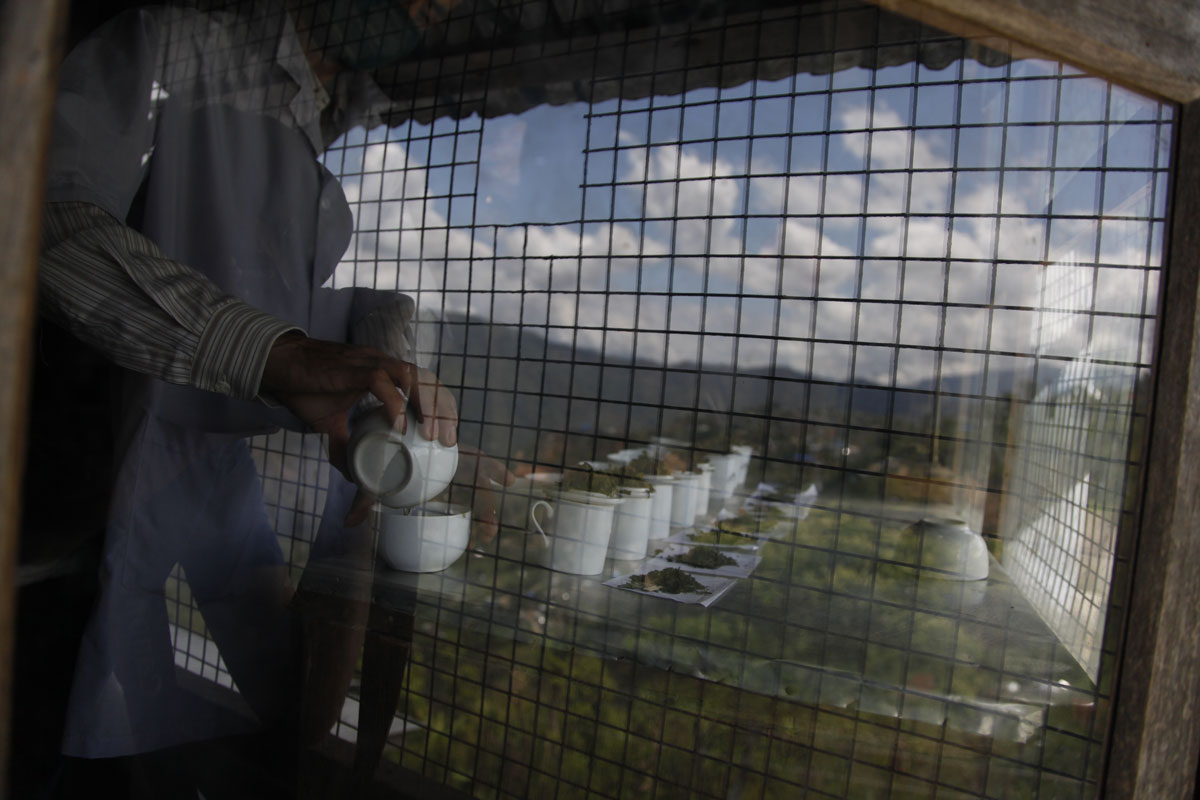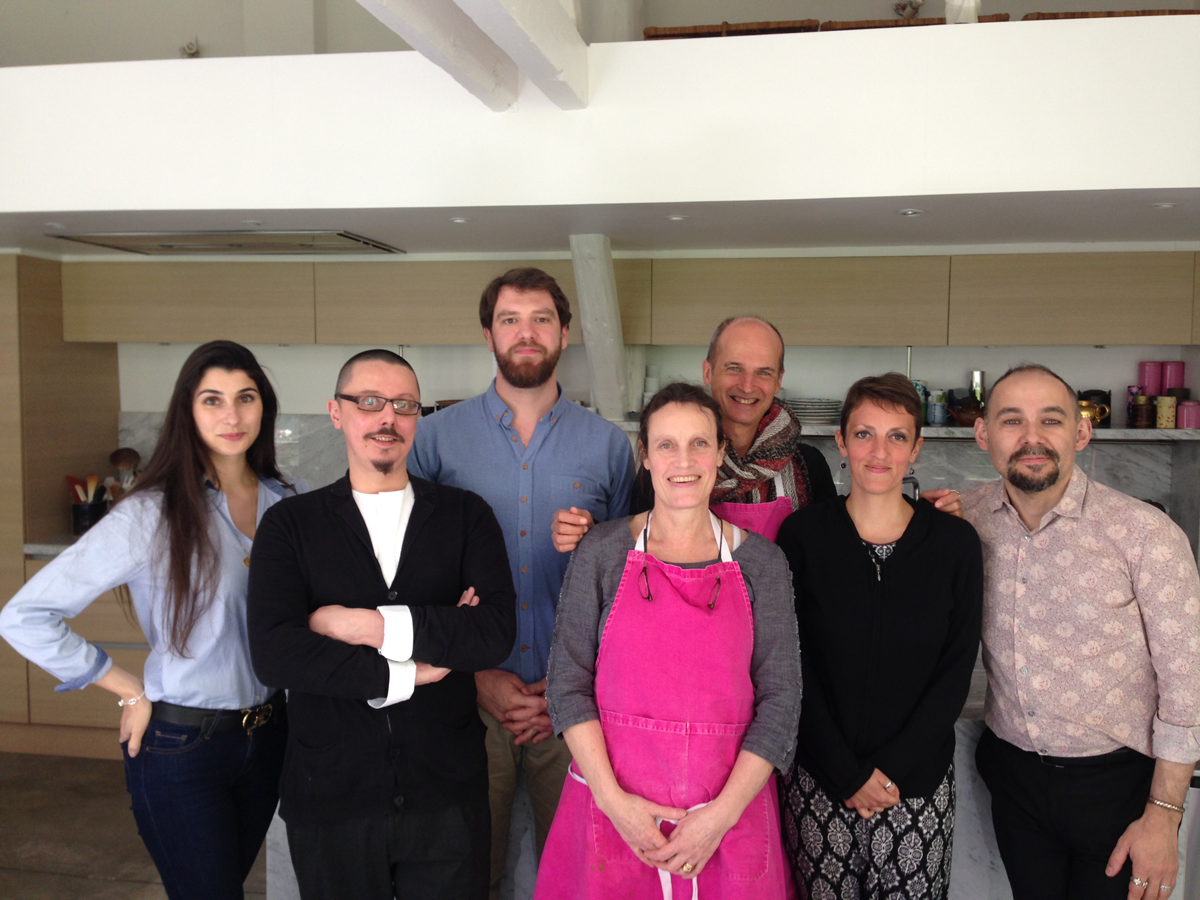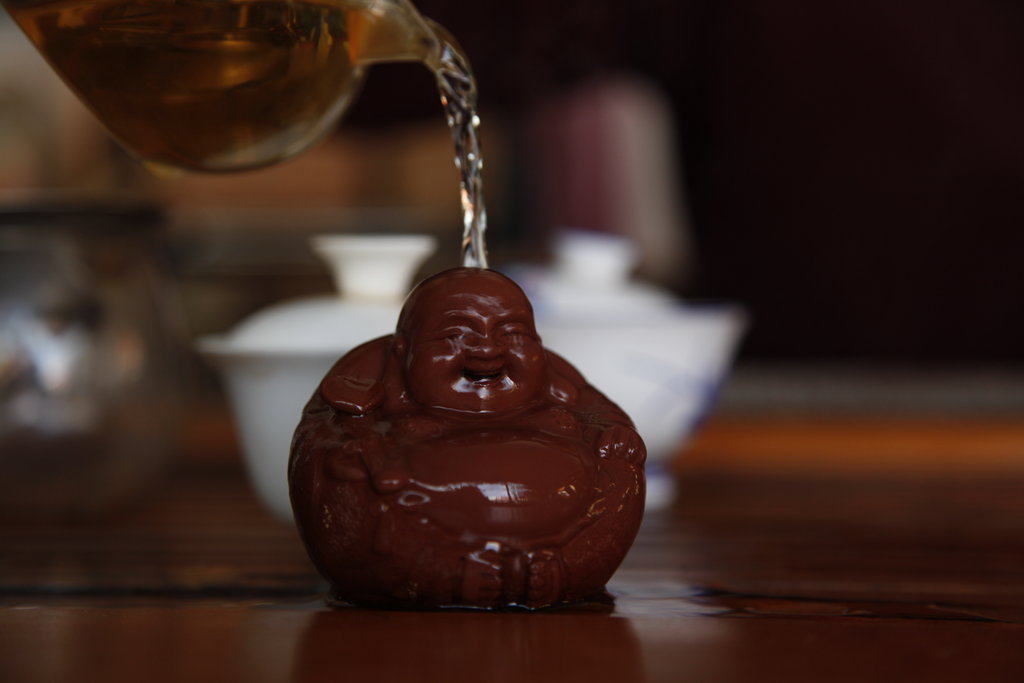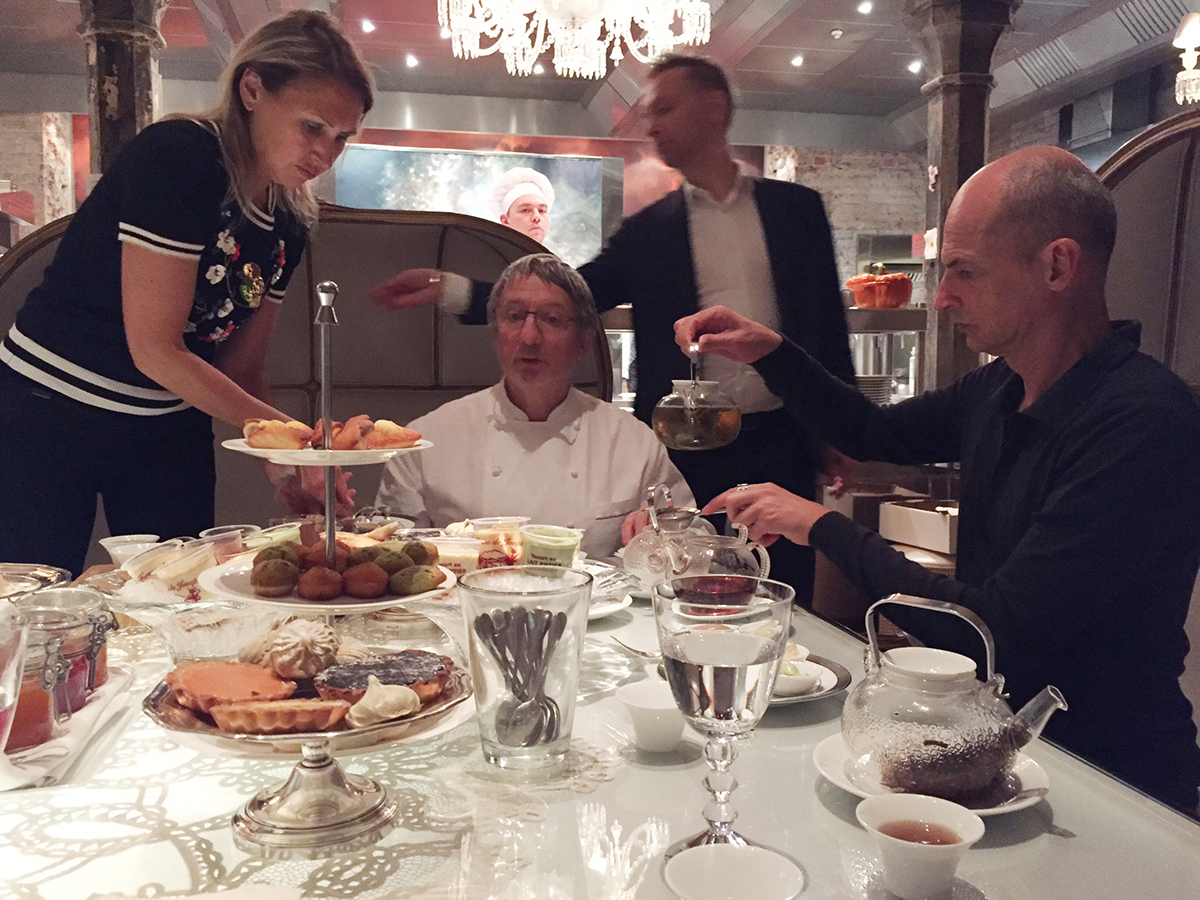My first trip to Malawi was just over three years ago. Until then, nobody had sold tea from that country in France, and I’m delighted to have found some very good teas there, which have been well received among tea enthusiasts. In a few days’ time I will be back in the far south of this magnificent country to see teas being made, including a dark tea and a smoked tea, and to taste them with Alex and his team. I will take some teas from other countries with me, which is something else I like to do in my work: encourage producers’ curiosity by getting them to try teas made by other people, not so they can copy them, but to inspire them and to connect them, through the tasting, with other farmers who have equally precious expertise.
Tea and food
Yorozu in Fukuoka, a unique experience
The Japanese city of Fukuoka may not get many Western tourists, but if you go there and you like new gastronomical experiences, you should go to Yorozu. You need to book in advance, you need to speak Japanese, or go with someone who speaks the language, it’s essential, and you need a couple of hours free. Then, let yourself be guided, and Suguru Tokubuchi will introduce you to pairings of food with tea and various alcohols, dishes prepared in front of you in an intimate setting, which makes every sip even more precious, every mouthful chosen to accompany one of the cocktails. It’s a unique experience.
Tea tasting with Manuel, “Meilleur Sommelier de France”
Named “Meilleur Sommelier de France” (“Best Sommelier of France”), Manuel Peyrondet is also interested in tea. He came to taste some premium teas with me, prepared at room temperature, meaning they were steeped for exactly an hour in water at 20°C. We talked about tea and food pairings, accompanied by Vanessa Zochetti, who was interviewing us for the next issue of Bruits de Palais. Tasting tea with a sommelier, especially Manuel, who used to be a sommelier at the Hotel George V, as well as the head sommelier at Taillevent, then at the Royal-Monceau, is a unique experience. In the world of fine food and drink, we often live in our bubble, focusing on our specialist product: wine for Manuel, tea for me. It’s really strange to move outside this world, to focus on how we respond to different textures, aromas and flavours. It leads to particularly enriching discussions.
And for those who don’t just drink tea, Manuel runs a wine club, which is an excellent way to build up a collection and attend tastings: www.chaisdoeuvre.com
(photo: Emmanuel Fradin)
Tea and style
It’s true that preparing tea consists simply of placing tea leaves in contact with water, an encounter that produces a delicate, fragrant drink. The process can be more or less straightforward, more or less delicate. In China, in the space of barely 20 years, preparing tea using the gong fu method, which must be done slowly and with self-control, has become incredibly popular. It is often young women who perform the task. They are always elegant, and every movement is precise. You watch in admiration as their agile fingers trace beautiful flowing arcs in the air before depositing a few drops of the precious nectar in your tiny cup.
Analyzing the wet leaves
When we taste tea, we pay attention to the leaves at every stage. Of course we are interested in the liquor, which we drink, and we also examine the dried leaves: are they whole or broken? Do they contain buds? What colour are the leaves? Are they all similar? Lastly, the infused leaves can tell us a great deal. We smell them, and press them, as Nirananda Acharya is doing here. Often, the smell of the wet leaves can tell us as much about the tea as drinking the liquor itself. The wet leaves inform us about every stage of the processing. We can pick up on the slightest defect, or on the contrary, we can revel in the wonderful bouquet.
Preparing for a successful tasting
The Tea School provides training for Palais des Thés employees to ensure their knowledge and expertise is as good as possible. The school also offers courses for members of the public who want to learn about tea and the best way to drink it, and lastly, it trains food professionals. Recently, these have included teams from the Ritz and Bristol hotels in Paris. In this way, maîtres d’hôtel and sommeliers learn about tea, and many are passionate about the subject. Some have built up their knowledge over a long period, while others are thirsty to learn. This is how we prepare the tasting session – this one took place at the Institut Paul Bocuse a few days ago. There are three tasting sets per participant, to taste three premium teas (Jade Oolong by Mrs Ming, Dong Ding Antique, Pu Erh Menghai XO Milésime 1999). In addition, five teas were infused in cold water and served in stemmed glasses: Ryogôchi Saemidori Shicnha Ichibancha 2017, Kagoshima Benifuki by Mr Kumada, Népal Kanchenjunga Gold Récolte Tardive, Satemwa Dark and Enjin Jukro from Korea. The leaves are examined in little dishes. However, we do not label the teas – I like people to taste them blind and if possible I hide the tea colour, without saying what type of tea it is, so that students can keep their minds clear and not form preconceptions. This is a refined approach to tea. It is about awakening the senses, describing a texture and a flavour, and recognising aromas. My dream is to initiate new people into this vocation so that one day they can become a tea sommelier!
Waiting for the tea tasting to begin
The preparation for a tasting is a special moment. I watch what my host is doing, each precise movement. The leaves are presented on a base that allows you to see them, then the tea is weighed out to the nearest tenth of a gram, before being steeped for a specific time. Each tea must be brewed in exactly the same conditions. Before tasting the tea, while the liquors cool a little, I like to take a few photos of the room itself, of people going about their activities, their faces, or the landscape. I often make use of windows. The reflections can be unexpected. I take photos through the window, while others look on, puzzled. Here, at the Kanchenjunga Tea Estate, through the grille-covered window, you can see the tea being prepared against a background of mountains and the tea garden.
Tea Sommeliers day
Working together is good; sharing good times is even better. Yesterday was the Tea Sommeliers day, which I devote to the people who have obtained their precious diploma. The aim of the day is to spend a good time together, with tea, food and treats for the senses.
We began by tasting the entire selection of first-flush Darjeelings, which I have just completed, before joining Nathaly from L’Esprit-Cuisine for a meal of food and tea pairings. With Nathaly – a remarkable, positive and passionate teacher – we prepared an onglet of Aubrac beef with crème à l’anguille, flavoured with Bourgeons de Yunnan Premium tea. It was delicious, and we ate it accompanied by the same tea. This followed a fresh herb soup served with a Taiwan Si Ji Chun, and was followed by a delicious streusel, chocolate and black sesame biscuit served with the famous Jukro from South Korea.
In the afternoon we returned to the tasting room, where our tea sommeliers discovered a few rare teas, tasted blind of course, before we all decided together whether they merited being called “premium” teas. Among the curiosities we tasted were a goishicha from Japan, a compressed dark tea from Hunan, little tea balls from Sri Lanka, a tea from the Nainital region of India, and a black tea from Colombia!
The “tea pet”, the tea enthusiast’s best friend
Pets are wonderful creatures that can show the greatest humanity at times when our fellow humans may be lacking. We find these friends to be so sensitive and loyal that the description of animal does not do them justice.
In China, all tea connoisseurs and enthusiasts who use the Gong Fu Cha to prepare their brew have one or more “tea pets”. The tea pet is a terracotta figurine placed on the tea boat, over which tea is poured from time to time, to share special moments with it. Over the years the figurine acquires a patina through repeated dousing. The tea pet can be an animal or a human figure, as seen here.
A tea pet, or company being, shares your day-to-day life. Like other pets, it is always in an agreeable mood and is good at listening. You know where to find it. It is always there for you, loyal and happy.
A happy combination
Identifying tea and food pairings is a serious business. By this I mean identifying a tea to accompany a dish so that you create a happy combination for both protagonists. And that’s where it gets difficult. For example, if I pair a Genmaicha with a hazelnut financier, it only works if the tea’s vegetal, toasted notes enhance the cake, and also if, having consumed a morsel of the financier, the Japanese green tea is revealed in a new light, to its advantage. A few weeks ago I spent a solid six hours in the company of chef Michel Lentz, at the Baccarat Crystal Room in Moscow, tasting with him a profusion of bouchées, tartlets, crèmes, madeleines, financiers, meringues, ice creams and sorbets, made by him, accompanied by an equal number of teas, so that together we could find many happy combinations. I would particularly like to mention the crème caramel, with memories of childhood, which we enjoyed with a Dan Cong for the top part, while the liquid at the bottom of the ramekin was the most successful pairing with a Jin Zhen, with warm notes of stewed fruit, wax and honey.

